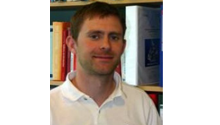 CUDA Spotlight: Scientific Computing in Denmark Read more CUDA in Action Spotlights This week, Allan P. Engsig-Karup of the Technical University of Denmark (DTU), and GTC 2010 speaker, shared details about his research on the OceanWave3D wave simulation model. OceanWave3D will help engineers create better designs for structures that exist in the ocean environment, like oil platforms and offshore windmills. NVIDIA: Allan, tell us about your work at DTU. My collaborative research is focused on GPUs for applications requiring efficient PDE (partial differential equation) solvers and optimization algorithms, as well as development of performance profiling tools. NVIDIA: How can this research be used in the real world? NVIDIA: How did you become involved in GPU computing? NVIDIA: What kind of results have you achieved with CUDA? NVIDIA: Tell us about Denmark’s national GPU laboratory. NVIDIA: What other interesting areas are you working on? Relevant Links: Contact: |